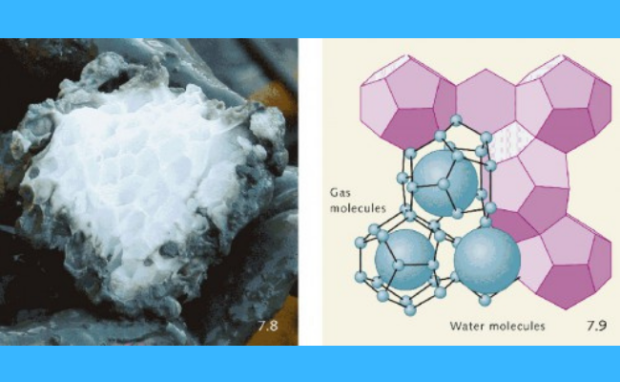China unveils drillship for harvesting ‘flammable ice’
China announced its latest drilling vessel, “Mengxiang” (dream), which will drill the Earth’s deepest region for methane hydrates. These solid, ice-like chunks contain an abundance of methane gas, hence the term “flammable ice.” Then, the country will harness that as an alternative energy source.
The Red Dragon is the world’s largest importer of oil and gas. Consequently, it is looking for alternative energy sources and creating new ones. Methane hydrate is one of the latest in its sights, and with enough research and development, China might harness its power. Soon, the world may include it as another energy source.
This article will discuss China’s plans to mine flammable ice in the South China Sea. Later, I will elaborate on its other energy breakthroughs.
How will China dig for flammable ice?
China will conduct the 1st sea trial of its self-developed and world's most advanced ocean-drilling research vessel, Mengxiang, in S China's Guangzhou on Dec 22. The ship, with a max range of 15,000 nmi, can operate for 120 consecutive days and drill in waters as deep as 11,000m. pic.twitter.com/CwKJCPCFTY
— China Science (@ChinaScience) December 18, 2023
Mengxiang is a 33,000-ton vessel that will scan the South China Sea for methane hydrate sources. Also, its sprawling laboratory will assist in researching them.
Interesting Engineering says the region has roughly 80 billion tonnes of flammable ice in its waters. That is why Mengxiang will reach a depth of 36,089 feet or 11,000 meters to reach it.
That depth surpasses the Mariana Trench, the deepest point of the world’s oceans, measuring 36,200 feet or 11,034 meters. The ship will use smart technology like the digital twin system to monitor drilling operations.
Soon, the country may extract methane from flammable ice, letting it become more energy-independent. However, it may spark geopolitical tensions due to sovereignty claims.
What is flammable ice?

Gas hydrates or methane hydrates are ice-like water compounds containing trapped natural gas, including methane. They are stable at specific temperatures and pressure conditions in deep-sea sediments and permafrost areas. World Ocean Review says it forms in two ways:
- Dead marine creatures like microalgae or krill sink through the sea floor. Then, methane-producing microorganisms break them down into methane and carbon dioxide. Eventually, the lack of oxygen and sulphate forms methane hydrate.
- Methane from beneath the Earth rises to the ocean floor. Over time, the immense pressure solidifies thermogenic methane into flammable ice.
You may also like: How to stay safe in poor air quality
The educational website says little to no methane escapes from flammable ice, so it is unlikely to worsen global warming. However, it may cause powerful tsunamis.
Methane hydrate deposits fill gaps in the ocean floor. Removing them will leave air pockets that will eventually collapse due to pressure.
Consequently, water will dip into that collapsing structure, causing it to move violently. As a result, it may push gigantic waves into coastal areas.
Other Chinese energy breakthroughs
The Red Dragon has also been improving existing energy sources, namely nuclear power. It recently launched the first fourth-generation nuclear power plant.
The Gen IV International Forum (GIF), an international cooperative framework of major nuclear nations, explains the goals of 4th-gen reactors. They aim to limit nuclear energy’s hazardous waste, environmental impact, meltdown risk, and proliferation risks.
Most nuclear power plants use water cooling, but the Shidaowan nuclear reactor uses helium gas. That enables the country to build these facilities away from water sources.
You may also like: Ancient landscape found under Antarctic Ice
Zhang Zuoyi, the Tsinghua University Institute of Nuclear and New Energy Technology dean, said they can produce heat, power, and hydrogen to help China and the world “become carbon neutral.”
The Shidaowan 4th-generation nuclear reactor will be able to produce hydrogen alongside electricity. Then, China could use that as fuel and designate it for various industrial applications.
One of its developers, China National Nuclear Corporation (CNNC), said, “It signifies that China has completed the world’s first commercially operational modular nuclear power plant with fourth-generation nuclear technology, marking the transition of fourth-generation nuclear technology from experiments to the commercial market.”
Conclusion
China plans to drill into the South China Sea to harvest methane hydrate. The country could use a solid substance containing methane as an alternative fuel source.
Flammable ice is unlikely to release greenhouse gas emissions. However, mining could cause tsunamis that wreck nearby coastal areas.
Nevertheless, research and development could turn it into one of the world’s energy sources. Learn more about the latest digital tips and trends at Inquirer Tech.